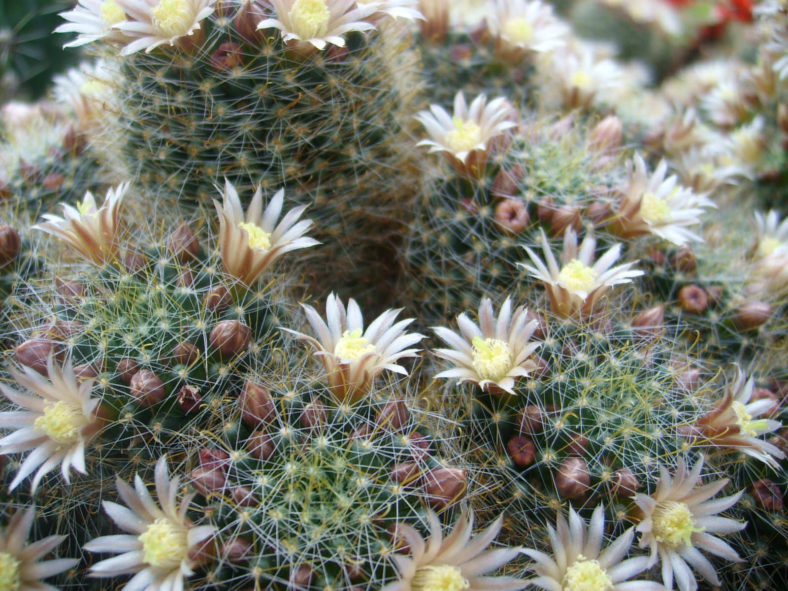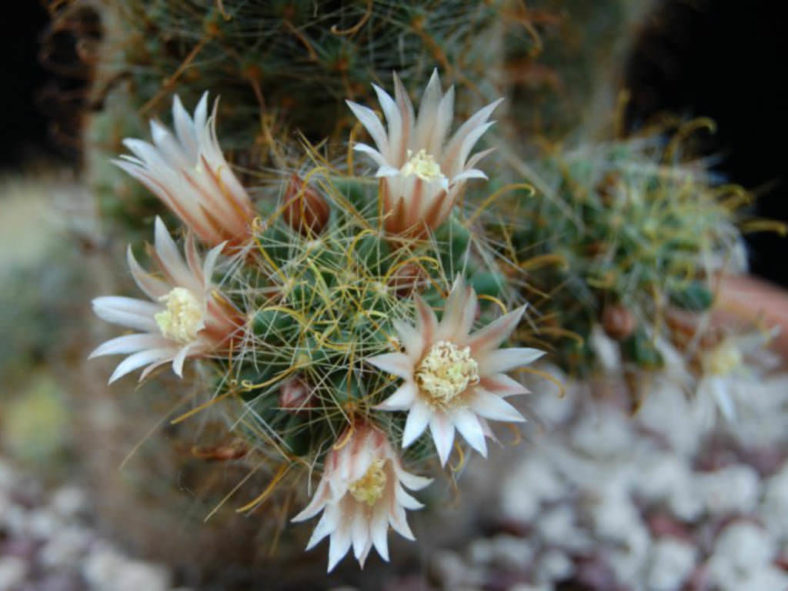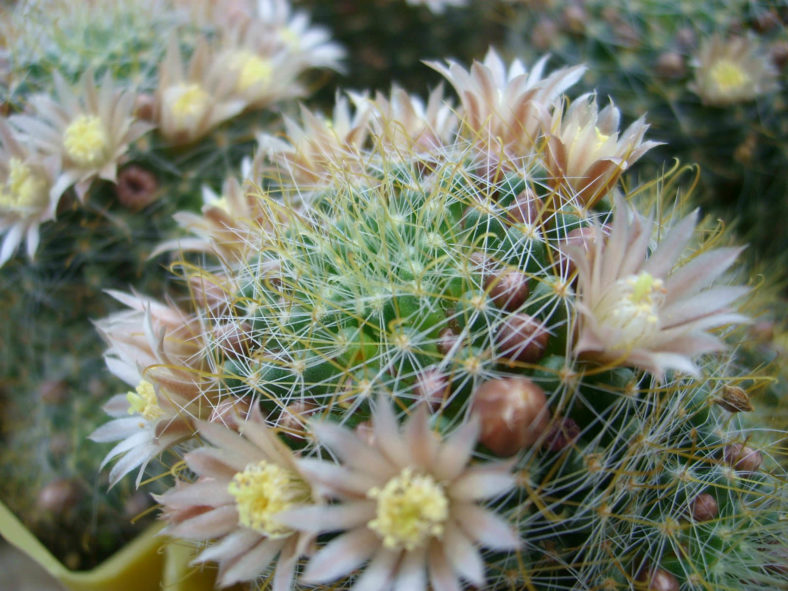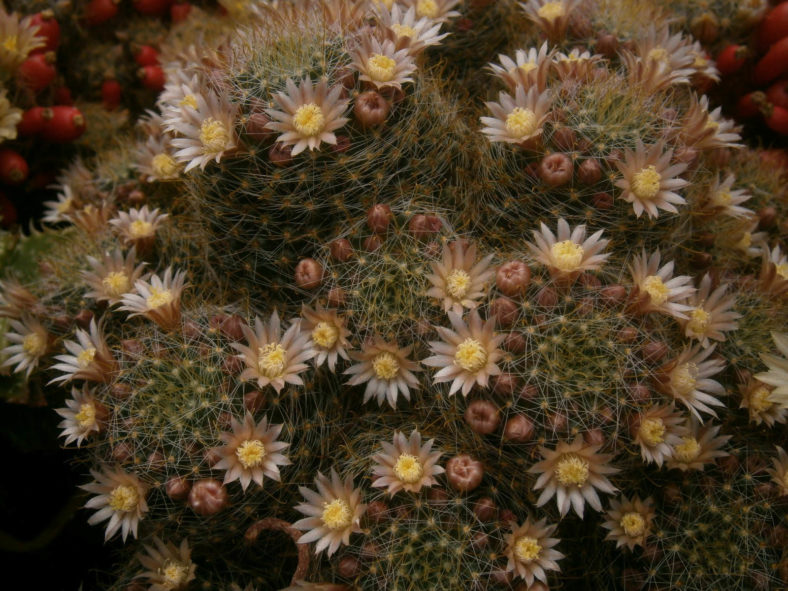Scientific Name
Mammillaria crinita subsp. wildii (A. Dietr.) D.R. Hunt
Common Name(s)
Fishhook Pincushion Cactus
Synonym(s)
Mammillaria wildii, Neomammillaria wildii, Mammillaria glochidiata, Cactus glochidiatus, Ebnerella wildii
Scientific Classification
Family: Cactaceae
Subfamily: Cactoideae
Tribe: Cacteae
Subtribe: Cactinae
Genus: Mammillaria
Etymology
The subspecific epithet "wildii" (pronounced "WILD-ee-eye") honors Hiram Wild (1917 -1982), an English botanist who worked in Southern Rhodesia.
Origin
Mammillaria crinita subsp. wildii is native to Mexico (Hidalgo).
Description
Mammillaria crinita subsp. wildii is a small cactus with dark green, spherical to short cylindrical stems with conical tubercles, each with a cluster of spines at the tip. The stems can grow up to 6 inches (15 cm) tall and 2 inches (5 cm) in diameter, at first solitary but cluster very young, forming a dense clump over time. Each areole bears 3 to 4 (one hooked) central spines and 11 to 15 radial spines. The central spines are yellow to yellowish-brown, measuring up to 0.25 inches (0.6 cm) long, while the radial spines are whitish and smooth, measuring up to 0.2 inches (0.5 cm) long.
The flowers are brownish-yellow and appear in spring, reaching a diameter of up to 0.6 inches (1.5 cm).

How to Grow and Care for Mammillaria crinita subsp. wildii
Hardiness: USDA hardiness zone 9b to 11b: from 25°F (-3.9°C) to 50°F (10°C).
To encourage better flowering, allow the plants a cooling period in winter and suspend watering. Unlike many other cacti, which use their ribs as storage devices, Mammillaria feature raised tubercles, from which spines emerge. When you water, the tubercles will expand to increase water storage. The flowers appear from the axils of these tubercles on the previous year's growth, which accounts for their interesting halo effect. The cactus mustn't be exposed to prolonged dampness and standing water. Never let your cactus sit in a dish of water. Lastly, fertilize during the growing season for the best results.
Repot as needed, preferably during the warm season. To repot Mammillaria, ensure the soil is dry before repotting, then gently remove the pot. Knock away the old soil from the roots, removing any rotted or dead roots. Treat any cuts with a fungicide. Place the plant in its new pot and backfill it with potting soil, spreading the roots as you repot. Leave the plant dry for a week or so, then begin to water lightly to reduce the risk of root rot.
See more at How to Grow and Care for Mammillaria.
Links
- Back to genus Mammillaria
- Succupedia: Browse succulents by Scientific Name, Common Name, Genus, Family, USDA Hardiness Zone, Origin, or cacti by Genus
Photo Gallery
Click on a photo to see a larger version.


